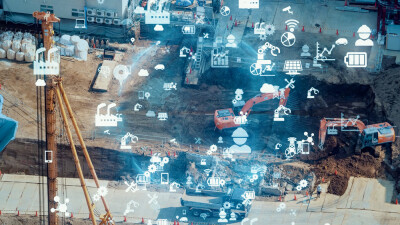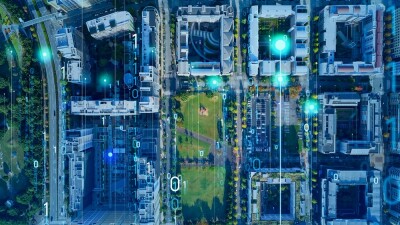When we look back at human history, we often delineate eras based on the dominant technology of the age, often surrounding innovations that transformed humanity. Going back to ancient times, we talk about the Stone, Bronze, and Iron Ages, all marked by the material with which the tools of the time were made. Fast-forwarding, other inventions like the printing press, assembly line factories, and most recently the internet have marked not just industry, but the way people lived. Whether it will be on the same level of these centuries-defining technologies, artificial intelligence is at least being promoted as that level of technology. In other words, we are firmly in the AI Age, for better or for worse.
If we zoom in a little bit more specifically to the AEC, urban planning, and facility management sectors, one could also argue we are entering a potential digital twin era. Thanks to improvements in other technology like 3D modeling, data capture, and connectivity tools like 5G, among others, digital twins are becoming more of a reality. There is a lot of similarity between AI and digital twins, not the least of which being that both have spent the last decade or so as buzzwords that, frankly, aggravated many people by appearing to lack true value.
One could argue that they are still in that “buzzword” zone, at least to some extent, with significant portions of the conversation around each leaning more toward the theoretical and less toward the present-day practicalities. That said, there is some value already being created by each. It’s also worth looking at the two technologies together rather than as separate tools, as there is a real symbiotic relationship between the two, with one benefiting from the other and vice versa.
On the one hand, artificial intelligence should take the value of digital twins to the next level in a couple of different ways. Arguably, the defining feature of a digital twin is the sheer amount of data forming the basis. There is often a 3D model at the center of the digital twin, which should be created using reality capture data, and as we know that alone creates large amounts of data to be analyzed and monitored. What separates a digital twin on top of just being that model is some form of regular data coming in from other sources, like IoT sensors, with the most valuable examples containing the most data.
Collecting and managing that data is certainly a major challenge in building digital twins, and as alluded to above, it’s why real value coming from them is still a relatively new phenomenon. But the real value is then going to come from monitoring and analyzing that data, preferably in real-time or something close to it. It would take a trove of humans working around the clock to really stay on top of this, and frankly putting together that kind of staff in this industry right now is not feasible. So, artificial intelligence can and is being used to flag pieces of this ever-growing amount of data that need to be further examined.
It’s even worth honing in specifically on generative AI and large language models, which is what is really driving this broader AI explosion across industries. Right now, most of the AI usage in the industries we cover falls more into computer vision and machine learning categories, with the term “AI” becoming muddled and starting to include these workflows. However, it’s not hard to see how LLMs could fall into this use case, with workers being able to more easily query about the data using natural language that can be interpreted by the machine. Even better, digital twins create more value the more stakeholders can make use of them, so the inclusion of LLMs should eventually allow for less technical users to create value from the tools still.
That’s only one side of the equation, though, showing how AI can very clearly help drive value around digital twins – and really, already is. The flip side is also true, however, though it’s not quite as obvious. We are still in the nascent stages of this boom around AI, but it’s clear that the number one problem in keeping this momentum and really maximizing the potential around this technology is going to be around energy consumption. Particularly given all of the efforts around the globe to curb our energy usage due to climate concerns, this is an existential question of how we can continue to power these energy-draining systems while also prioritizing the health of our planet.
Digital twins are going to help with that, and in some ways, they already are. In the short term, companies that are heavily invested in creating the bases of AI tools are in need of massive data centers to power said systems. As we’ve written before, digital twins should be a major part of the construction and upkeep of these data centers that are being built all over the world.
These traditional data centers, however, still need to be powered, and looking long-term, there needs to be a sustainable plan of how to create this power. Digital twins can be used for this, too. One of the most powerful capabilities of a fully-fleshed digital twin is to run simulations on large scales, using historical data along with physically-accurate representations to plan for every scenario. We’re already seeing this kind of work done on large scales in places like Singapore and along the Mediterranean. The energy industry, along with stakeholders who represent the public that could be affected by any new energy-creation techniques, should be using digital twins to find the most effective ways to power these AI systems that, in the mind of some, are going to redefine how humans live.
For both of these technologies, AI and digital twins, there is a healthy skepticism to be had about just how much value can be created from them. Theoretically, the most hopeful have a path to being correct, but we’re a long way from truly experiencing that value. If the two tools are going to approach that maximum potential, they should, and almost certainly will, be leaning on each other.


.jpg.medium.800x800.jpg)



